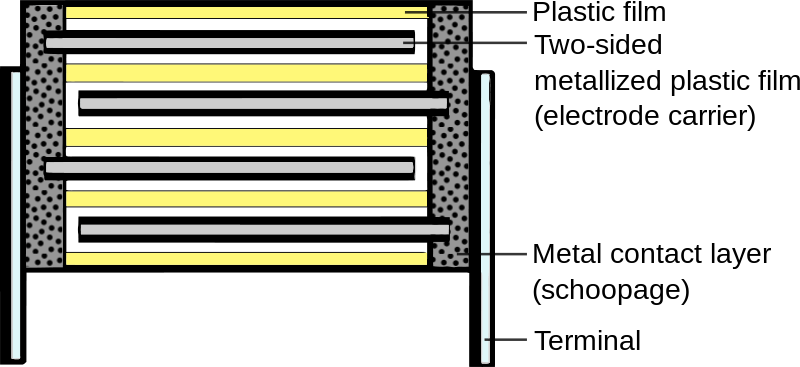Film Capacitors Information
Film Capacitor Basics
Film capacitors are passive components that use an extremely thin plastic film as a dielectric insulator. They are constructed of two pieces of plastic film wound into a cylindrical shape. The winding is attached to two unpolarized terminals, which represent the plates of a basic capacitor, and is then encapsulated for protection.
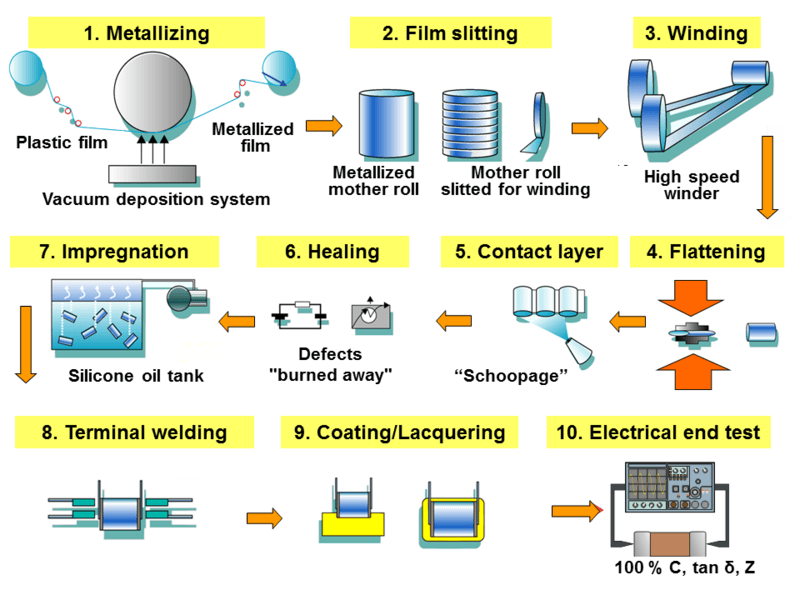
Film capacitor manufacturing. Image credit: Elcap
A film capacitor's dielectric determines many different attributes about the device, most importantly its rated voltage. Manufacturers are able to increase a capacitor's rated voltage by using thicker film and better quality, defect-free polymers. Other contributing factors include metallized films (discussed below), film arrangement, and frequency of use.
Film capacitors can be built as very large devices due to the simplicity inherent in the slitting and winding operations used to manufacture them. These power capacitors are widely used for energy storage in high voltage applications such as electrical power systems and power plants.
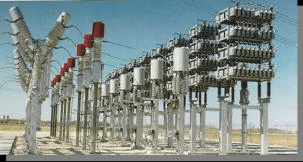
A large power capacitor bank in a distribution system. Image credit: Resource Engineering
Film vs. Metallized Film
A film capacitor's plastic dielectric is covered with electrodes for making an electrical connection to the terminals. The dielectric may be referred to as metal foil or metallized film, depending on the electrode arrangement.
A metal foil dielectric consists of two plastic films layered with a thin metal (typically aluminum) foil, with the foil layers functioning as electrodes. Metal foil capacitors provide easy electrode connection and good surge resistance, but may easily sustain damage due to dielectric breakdown.
Metallized film capacitors use two plastic films which have been coated with a very thin layer of aluminum (metallized), which serves as the electrode. Metallized devices feature a greater resistance to component damage from short circuits, but are typically weaker against surge currents than metal foil capacitors.
Cross-section of a metallized polycarbonate film capacitor. Image credit: Elcap
Specifications
Form Factor
When selecting a film capacitor, it is important to distinguish between leaded and surface mount devices.
Leaded (or through hole) capacitors have wire leads which extend from the device. These wires must be soldered onto a circuit board or other device to make a connection. Leaded devices are capable of strong mechanical connections, are relatively large compared to other components, and are generally being supplanted by surface mount products.
Surface mount (SMT) or chip capacitors do not have leads and are designed to mount directly onto a printed circuit board (PCB) or other flat surface. SMT devices can be much smaller than their leaded counterparts, are cheaper to manufacture, and are generally easier to handle when used with standardized automation equipment.
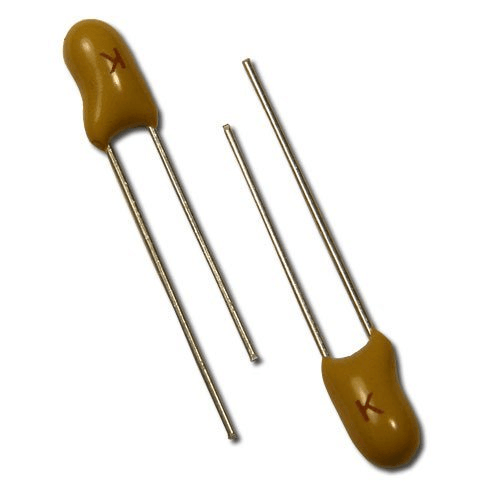
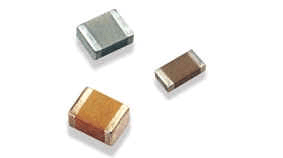
Leaded (left) and SMT capacitors. Image credit: Toscos | TutorialsWeb
Dielectric Material
A film capacitor's dielectric material largely determines the device's attributes or application.
Polyester capacitors, sometimes called polyethylene terephthalate (PET) or Mylar film capacitors, are generally used as replacements for obsolete impregnated paper capacitors. Polyester capacitors feature low moisture absorption and are acceptable for DC use up to 60 kV at operating temperatures less than 125° C. It is important to note that polyester capacitors are generally unsuited to all but the lowest frequency radio frequency (RF) applications. A typical minimum thickness for polymer dielectrics is 0.7 μm.
Polystyrene capacitors are very common general purpose film capacitors. Like polyester devices, they are stable and have low moisture pickup; polystyrene capacitors are better suited to low power RF applications, although their operating temperature is limited to less than 85° C and they tend to be larger than polyester capacitors.
Polycarbonate is a thermoplastic polymer also known by its trademarked names Lexan, Makrolon, and Makroclear. Polycarbonate film capacitors feature superior insulation resistance, dissipation factor, and improved dielectric absorption compared to polystyrene.
Polypropylene capacitors are extremely strong and reliable, and are often used in high voltage, high frequency, and high power applications. They do tend to be more susceptible to damage from surges or pulses.
Standards
There are many different standards related to film capacitors. The Electronics Industries Alliance (EIA) in particular publishes many standards specific to certain devices or applications. A smattering of standards, both comprehensive/general and specific, is listed below.
- BS EN 60384 (Film capacitors in electronic equipment [film dielectric]; 23 parts)
- EIA 376 (Fixed film capacitors in DC applications)
-
EIA 456 (Film capacitors in AC applications)
-
EIA 580A0AB (Fixed metallized PET film capacitors - DC radial leaded; pending standard)
- Aerospace
- Automotive
- Axial Leads
- Bolt Mounted
- Bracket Mount
- Bulk Pack
- Bypass Capacitors
- Fixed
- Flying Leads
- General Purpose
- Gull Wing Leads
- High Current
- High Frequency
- High Voltage Capacitor
- Leaded Capacitor
- Lighting
- Metallized Dielectric
- Motors / Motor Starting
- Polarized
- Polycarbonate
- Polyester
- Polypropylene
- Polystyrene
- Power Capacitors
- Power Factor Correction
- Power Supply
- RF / Microwave Capacitors
- Radial Leads
- RoHS Compliant
- Screw Leads
- Self-healing
- Shipping Tube / Stick Magazine
- Surface Mount / Chip Capacitor
- Surface Mount Technology (SMT)
- Surface Mount Technology (SMT)
- Tab Leads
- Tape Reel
- Telecom
- Through Hole Technology (THT)
- Tray / Rail
- Variable
